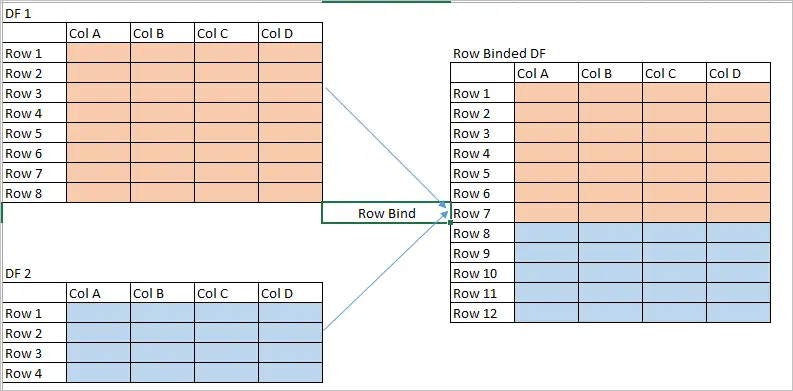Union and union_all Function in R : Union of two data frames in R can be easily achieved by using union Function and union all function in Dplyr package . Dplyr package in R is provided with union(), union_all() function. Union of the dataframes can also accomplished using other functions like merge() and rbind().
Union function in R:
UNION function in R combines all rows from both the tables and removes duplicate records from the combined dataset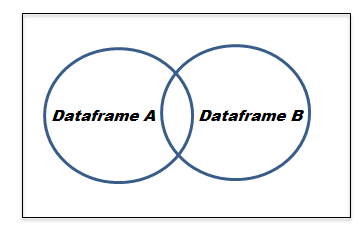
union_all function in R:
UNION_ALL function in R combines all rows from both the tables without removing the duplicate records from the combined dataset.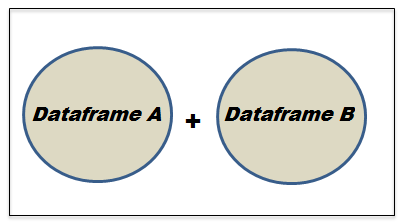
Union Function in R example: First lets create two data frames
#Create two data frames
df1 = data.frame(CustomerId = c(1:6), Product = c(rep("Oven", 3), rep("Television", 3)))
df2 = data.frame(CustomerId = c(4:7), Product = c(rep("Television", 2), rep("Air conditioner", 2)))
df1 will be
1 1 Oven
2 2 Oven
3 3 Oven
4 4 Television
5 5 Television
6 6 Television
df2 will be
CustomerId Product
1 4 Television
2 5 Television
3 6 Air conditioner
4 7 Air conditioner
Union Function in R :UNION function in R combines all rows from both the tables and removes duplicate records from the combined dataset. So the resultant dataframe will not have any duplicates.
library(dplyr) # union two dataframes without duplicates union(df1,df2)
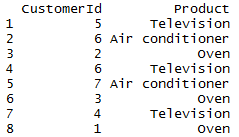
union_all Function in R example: UNION_ALL function in R combines all rows from both the tables without removing the duplicate records from the combined dataset. So the resultant dataframe will have duplicates.
library(dplyr) # union two dataframes with duplicates union_all(df1,df2)
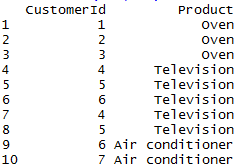
Other methods for union all of the dataframe in R : rbind()
There is an indirect way for union of data frames in R. it can done In using rbind() function. row bind (rbind) binds all the data frames as shown below
# union all in R - union all of data frames by rbind() in R df_unionall = rbind(df1,df2) df_unionall
so the resultant dataframe will be

Other methods for union of the dataframe in R : Merge()
The merge() function takes up the these two data frames as argument with an option all=TRUE as shown below, which finds union of the dataframe in R
# union in R - union of data frames in R df_union1 = merge(df1,df2,all=TRUE) df_union1
so the resultant data frame will be

Other methods for union of the dataframe in R : rbind() with unique()
There is an indirect way for union of two data frames in R. it can done In two steps.
- First row bind (rbind) all the data frames ·
- Then Remove the duplicates
These two step has to be done sequentially and has been explained with an example.
#row bind the data frames. df_cat = rbind(df1,df2) df_union = unique(df_cat) df_union
So the final output will be

For further understanding of union of dataframes using dplyr package in R refer the dplyr documentation
Other Related Topics:


